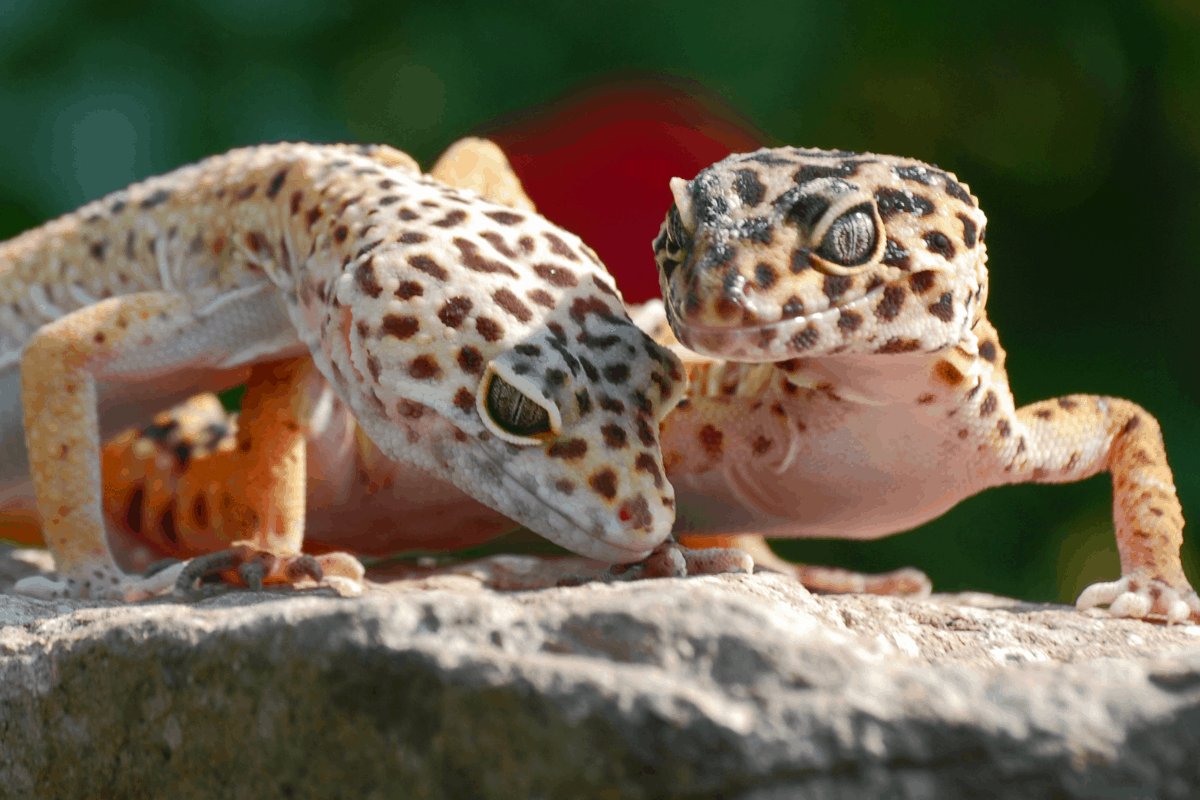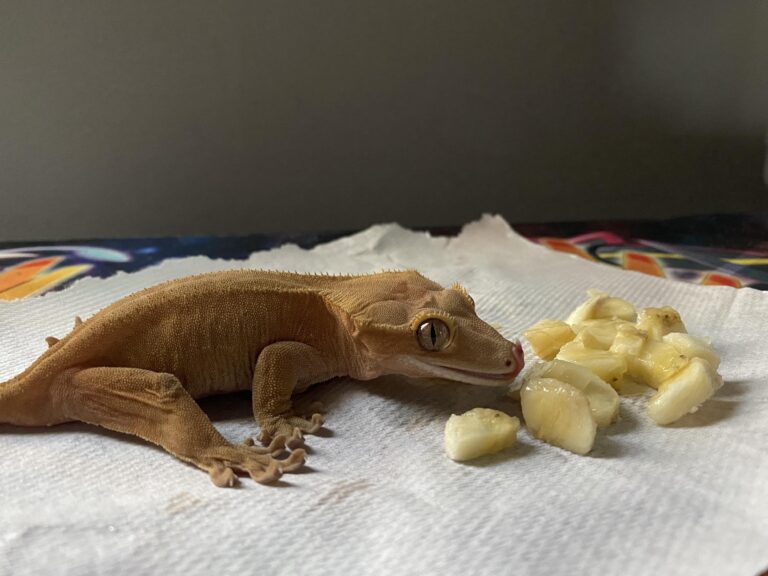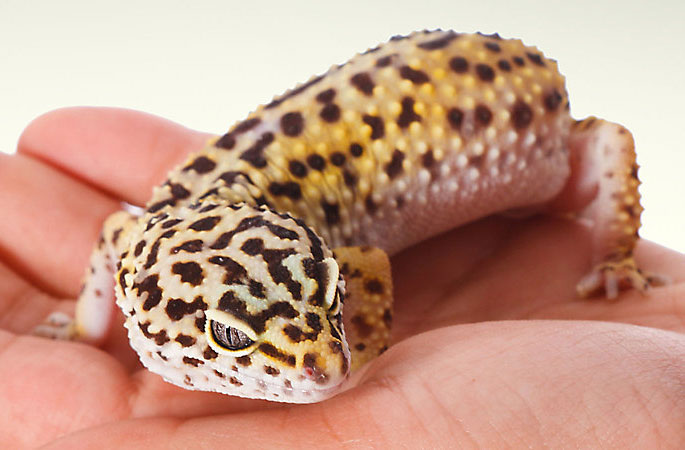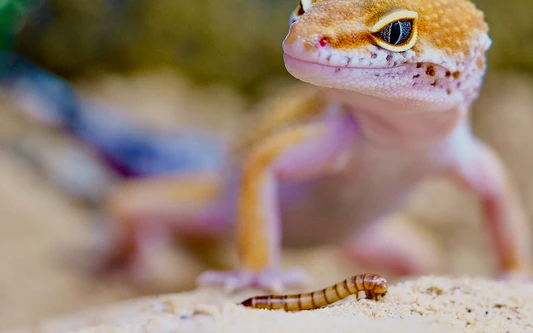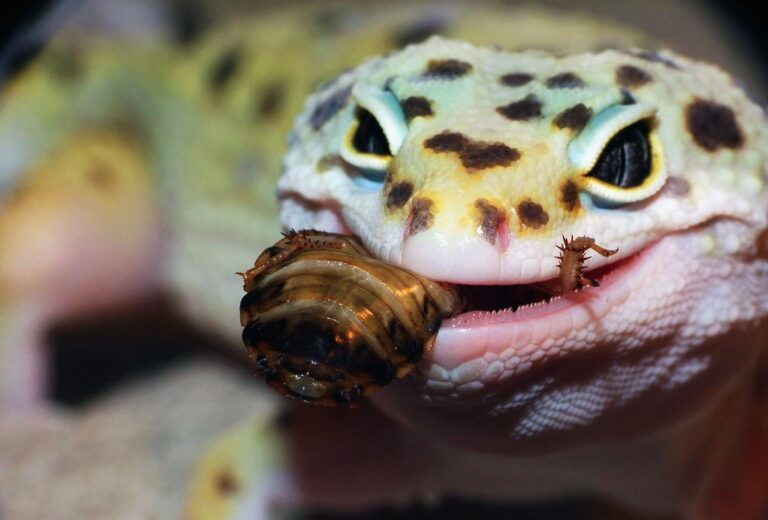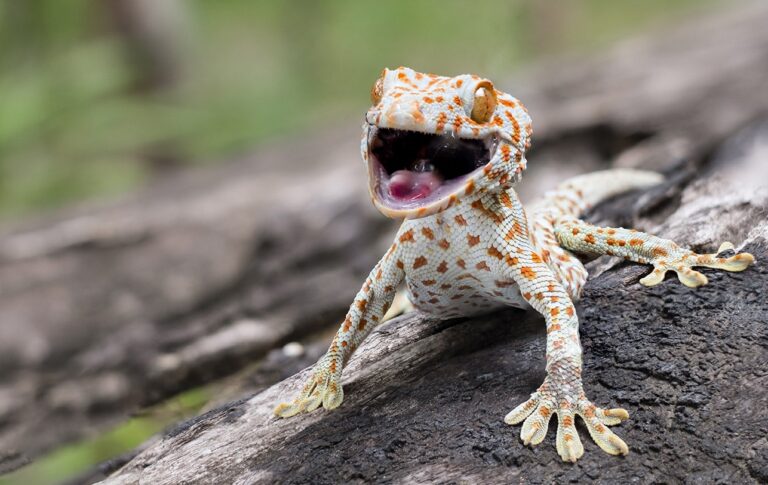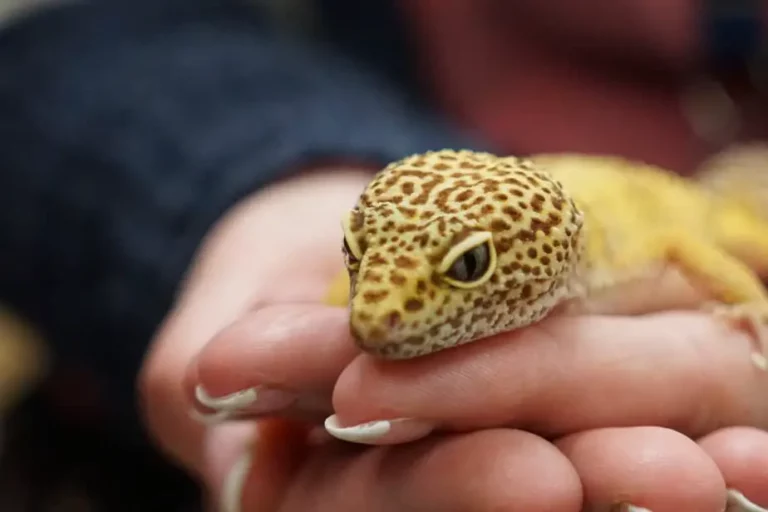Can Leopard Geckos Live Together: Exploring Sociability
As a passionate leopard gecko enthusiast, I’ve always been captivated by the charming personalities and unique characteristics of these small reptiles. They are renowned for their striking appearance and docile nature, making them a popular choice among reptile enthusiasts.
However, one question that often arises in the mind is whether these creatures can coexist harmoniously in shared enclosures. Is it a good idea?
And You know what? A big No, Rarely is it a good idea to have leopard geckos live together due to their solitary nature, territorial behavior, and the risk of aggression.
In this journey of discovery, I’ll delve into the intriguing world of leopard geckos and their potential for social living. So, let’s get started.
When Leopard Geckos Can Live Together?
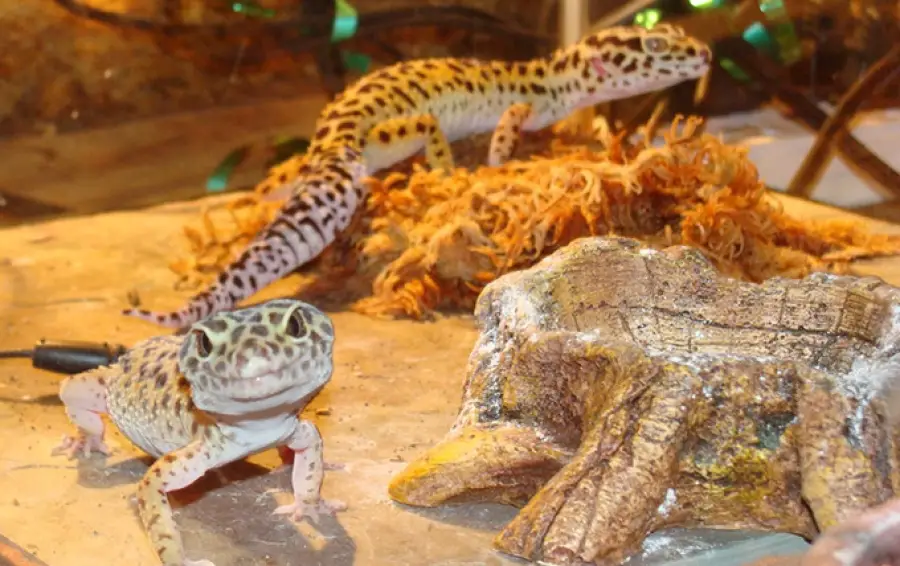
Males with Females for Breeding: You can house a male and female together if your goal is breeding. However, you must be prepared to monitor their interactions closely, as male can become aggressive during mating attempts. Once breeding has occurred, it’s best to separate them to prevent overbreeding and stress on the female.
Siblings Raised Together: They are raised together from a young age, especially if they are siblings, and may coexist more peacefully. Yet, even in this situation, there is no guarantee that they won’t become aggressive as they mature.
Large Enclosures: If you have a very large enclosure with multiple hiding spots, basking areas, and separate feeding stations, you can attempt to house multiple geckos together. More space can help reduce territorial disputes and competition.
Same-Sex Pairs in Some Cases: Some keepers have successfully housed same-sex pairs (two females or two males) together without serious issues, but this can vary depending on individual temperaments and the specific geckos involved.
Pairing two male leopard geckos is a big no. Males tend to fight over territory and resources, even without females around. This usually leads to stress , injuries, and eventually, one of them may die. So, never put two males together.
Pairing two female leopard geckos is a better option but not foolproof. They are less aggressive, but conflicts over resources can still happen. Make sure both geckos have enough hiding spots, food, and warmth. However, remember that individual personalities vary, so they might not always get along
When Leopard Geckos Can’t Live Together:
Mixed Sex Pairs Without Breeding Intentions: Housing a male and female leopard gecko together without the intention of breeding is generally not advisable due to the risk of aggression and overbreeding, which can harm the female.
Unknown Pairings: Avoid introducing unrelated adult to each other, especially if their history is unknown. They can be territorial, and introducing unfamiliar individuals can lead to rude.
Aggressive or Dominant Individuals: Some leopard geckos are more aggressive or dominant by nature. If you have a particularly aggressive gecko, it’s best to keep it in a separate enclosure to prevent harm to others.
Quarantining New Geckos: Whenever you acquire new leopard geckos, it’s crucial to quarantine them in separate enclosures for a period of time to ensure they are healthy and free of diseases before considering cohabitation.
Reasons Why Leopard Geckos Should Live Solo?
Territorial Behavior: They have a natural inclination towards territoriality. Co-habiting with others can cause stress and lead to aggressive behavior as they compete for territory, hiding spots, food, and resources.
Risk of Aggression: Co-housing, especially with different sexes, can result in aggressive interactions. Males may fight over females, causing harm, while females may also exhibit aggression when competing for resources.
Overbreeding: If a male and female are kept together, the constant attempts at mating can exhaust the female, potentially causing overbreeding issues, impacting her health.
Disease Transmission: Housing them together elevates the risk of disease transmission. Even seemingly healthy individuals may carry pathogens that could infect their cage mates.
Individual Needs: Each one has unique requirements for temperature, humidity, and diet, which can be challenging to meet when they are housed together.
Stress Reduction: In the wild, they are solitary animals, and they tend to be less stressed when kept alone. Stress can lead to various health problems, including a weakened immune system.
Breeding Control: If you’re not intending to breed them, keeping them separate is the only way to prevent unintended breeding and its associated complications.
Can Turn Temperamental Suddenly: Conflict incidents may not invariably end in fatality, yet they frequently yield grievous injuries, including the loss of toes and damage to tails. These injuries inflict not only pain but also carry the potential for significant veterinary expenses.
Thus, it underscores the prudence of housing leopard geckos in individual enclosures, ensuring their separation from other animals for their well-being.
Can Either Eat or Be Eaten: If its tank mate is a smaller anole, a leo can either become the predator or be eaten.
What Can Live With Leopard Geckos?
Other Leopard Geckos: Leopard geckos of the same size and sex (e.g., two females) can potentially cohabitate, but this is not without risks and should be approached with caution.
Similar-sized Gecko Species: Some keepers successfully with other small, non-aggressive gecko species, such as African Fat-Tailed Geckos, in spacious enclosures.
Insects: Crickets, mealworms, and other appropriately sized insects are suitable as feeder insects for them and can be kept in their enclosure.
Reptile-Safe Plants and Decor: Non-toxic, artificial or live plants, hiding spots, and appropriate substrate materials can enhance the environment.
Some Factors To Consider When Putting Two Leopard Geckos Together?
- Ensure that the two geckos are of similar size and age. Mixing different age groups or vastly different sizes can lead to conflicts.
- If you intend to house a male and female together for breeding, be prepared for mating behavior and closely monitor their interactions.
- Provide a roomy enclosure with multiple hiding spots, separate basking areas, and ample room to minimize territorial issues.
- Keep a watchful eye on their behavior. If you notice aggression, stress, or injuries, be ready to separate them promptly.
- Access to sufficient food to prevent competition, which can lead to stress and aggression.
- Isolate new one for at least 30 days before introducing them to your existing one to prevent disease transmission.
- Always have a backup enclosure ready in case conflicts arise.
- Observe their interactions. Occasional dominance displays are normal, but persistent aggression is cause for concern.
- Maintain appropriate temperature, humidity, and lighting in the enclosure to meet both geckos’ needs.
- Both are healthy before introducing them, as sick or weak individuals are more susceptible to aggression.
- Develop a plan for handling situations where they don’t get along and be prepared to separate them if necessary.
- Some geckos may form strong bonds with their cage mates, while others may not. Consider their individual personalities and be flexible.
- When female leopard geckos grow up together, they might get along better than adults meeting for the first time, but it’s not a guaranteed perfect match. However, with males, their history doesn’t matter; clutch mates will still fight.
Can you put Two Baby Leopard Geckos Together?
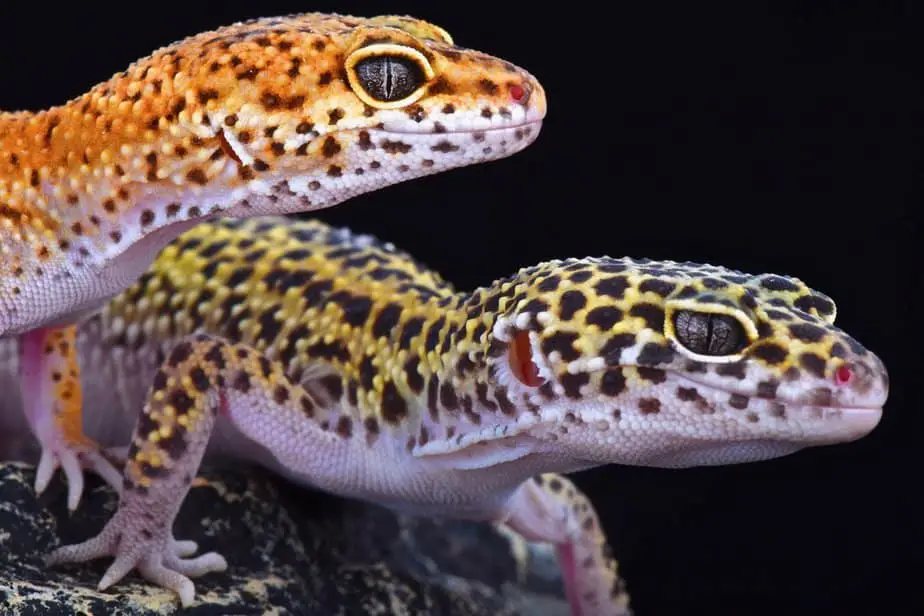
Yes, it is possible to house two baby leopard geckos together without them fighting. Many breeders and sellers often keep them together initially. However, it’s essential to provide an adequately spacious enclosure, preferably 10 to 20 gallons, with high walls to prevent escapes. Baby leopard geckos primarily eat crickets, as mealworms may be too large for them.
While they can enjoy being handled, be gentle as their skeletal systems are not fully developed. Watch for signs of stress, such as fast tail wagging or hiding. Choosing baby can offer a better chance of forming a strong bond with them compared to mature ones.
FAQs
Can A Baby Leopard Gecko Live With An Adult?
No, it’s not recommended to house a baby leopard gecko with an adult. Adults may view the babies as competition and potentially harm them.
Do Leopard Geckos Need A Friend?
No, leopard geckos are solitary by nature and don’t need a friend. They are perfectly content living alone.
How Big of a Tank Do I Need for 2 Leopard Geckos?
For two leopard geckos, a 20-gallon tank is generally suitable. Providing ample space is essential for their well-being.
How Many Female Leopard Geckos Can Live Together?
female leopard geckos can be housed together in groups, but it’s crucial to monitor for aggression. Generally, groups of 2 to 4 can coexist if provided with enough space.
Are there any benefits to having them together?
Yes, while some keepers successfully house leopard geckos together, there are minimal benefits to doing so. They may display more natural behaviors but also risk stress and aggression. Solitary housing is typically safer and less stressful for the geckos.
Final words:
In conclusion, based on my research and experience, it’s clear that leopard geckos are best kept individually. They have a natural tendency towards solitude and can exhibit territorial behavior, which often leads to aggression when housed together.
While there may be exceptions, attempting to make them cohabit can pose serious risks to their well-being. As someone who cares deeply for these amazing reptiles, it’s crucial to prioritize their health and happiness. Providing each gecko with its own carefully designed habitat is the responsible and compassionate way to ensure their thriving in captivity.

